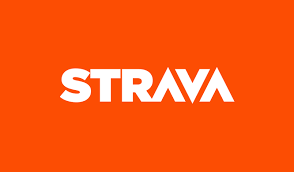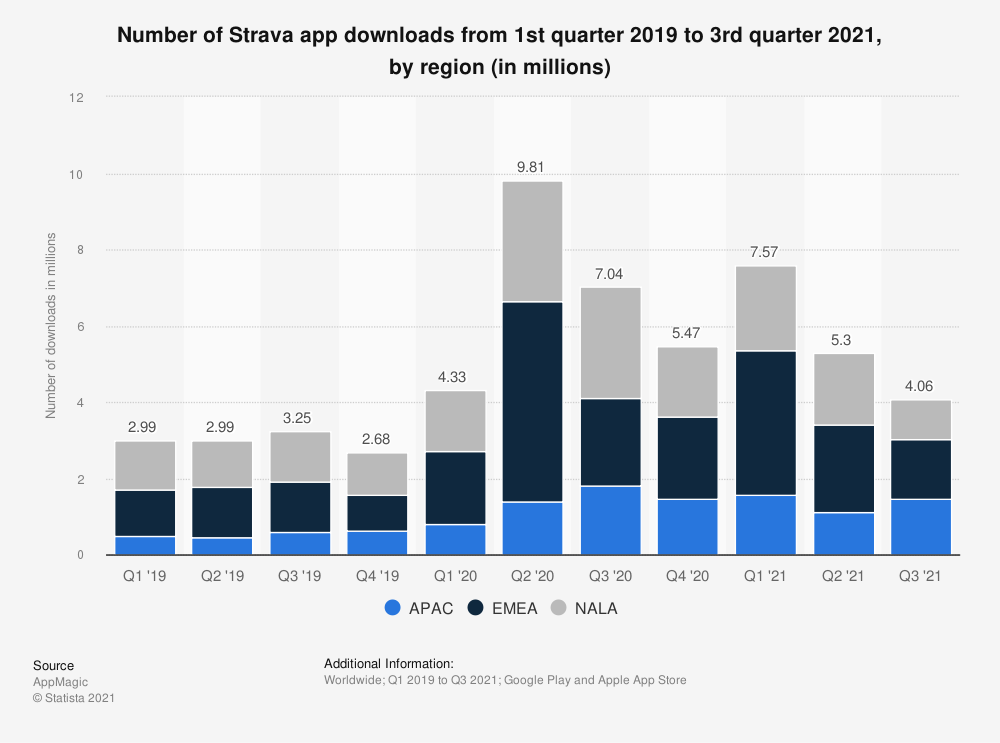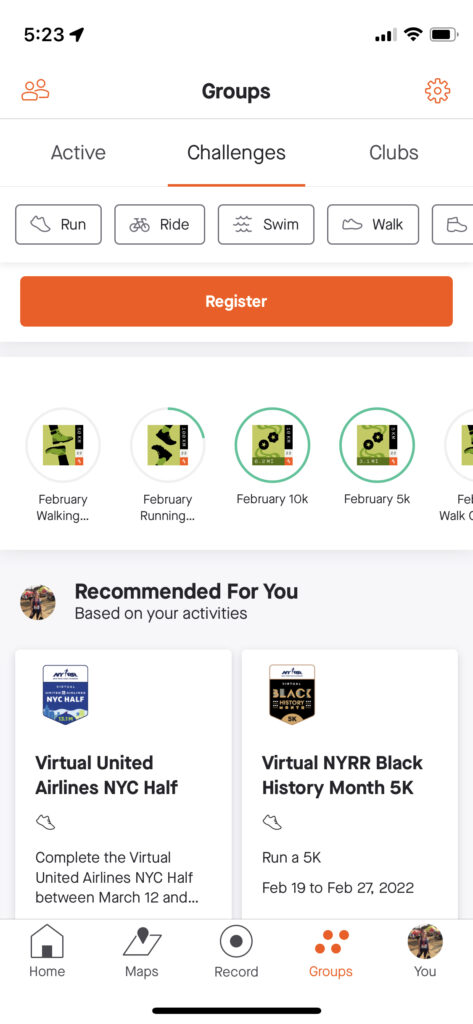Strava: Doubling Down on Community

Downloads of the activity tracking app more than doubled from 4.8 million in Q1 2020 to 9.81 in Q2 – how did they do it?
In March of 2020, I was in the final weeks of training for my second marathon, which was scheduled to take place in Greece at the end of April. My training had reached 32 miles per week, and I was looking forward to improving my time after a fun but jittery first marathon the previous year. Needless to say, in the coming days, the world would shift dramatically as the COVID-19 pandemic erupted across the globe. The running community hunkered down – with no idea when the virus would pass, many of us kept up with training. Others welcomed the rest for our weary legs. As it became increasingly clear that races would be canceled, however, a sense of defeat set in. The vibrant running community – which, yes, existed outside of races but thrived off of competition – was dulled as fear and lockdowns around the globe kept us at home.
Within a few weeks of the global onset of the pandemic, digital innovators began to transform the way we created community while physically apart. In the running world, perhaps no organization did this better than Strava. The activity tracking app, founded by Mark Gainey and Michael Horvath in 2009, allows users to track and upload more than 30 activities to the platform using the app, including indoor activities such as treadmill running and stationary biking. The app uses a freemium model which includes premium features such as Beacon, a safety signal that sends your live location to selected contacts while you’re completing an activity. The majority of Strava users use the free version, however, which is available in 195 countries.
Strava has grown consistently since its founding but saw exponential growth in 2020. The number of users on the app nearly doubled from $42 million in 2019 to $76 million in 2021, and their valuation more than quadrupled from $350 million in 2019 to $1.5 billion in 2020. When you break down the number of new users by quarter, the impact of the pandemic on the app’s popularity is immediately clear:

Strava’s growth is impressive and directly contributes to the intangible value that the platform creates. While Strava provides GSP tracking technology and fairly robust workout analysis, the users themselves provide the data that populates the platform. However, Strava’s homepage is not just a feed of other peoples’ activities. During the pandemic the company worked to build community through online clubs and challenges that any user could join and work toward completing by logging their activity on the app.
As co-founder Mike Horvath described it on the NPR podcast How I Built This, “[community] is where we see the needs that people have in this present moment with the pandemic. What people are lacking is that sense of connection with others. So we’re building specifically around how you can use Strava together with the people that will help you stay accountable to your goals and help you get more out of the time you spend being active.” This effort paid off. In 2021 Strava reported a 4x increase in challenge participation on the platform and the creation of 189,000 new clubs.
The robust community Strava has built has also enabled some novel ways to capture value. Strava enters short-term or ongoing partnerships with companies that sponsor challenges on the platform, such as “Let’s Go Outside” sponsored by British athleisure company Sweaty Betty. For the challenge, users aim to “run, walk or hike 40k in 14 days” in order to “bag a secret reward + the chance to win.” This month (February 2022), challenge partners include Le Col, Altra, Roka, Laird Superfood, Shokz, St. Jude Children’s Hospital, and Zwift.
As the pandemic recedes, Strava will need to find new ways to retain users who may have found the app convenient during isolation but now have less need for it as they return to their usual running or cycling groups. However, given that the app is free with a premium option, many users may continue logging their workouts on the platform. This is particularly likely for users who have opted to sync their Garmin, Apple Watch, or other GSP watch products to sync automatically with Strava. However, in order to avoid the fate of fellow pandemic darling Peloton.
Strava won during the pandemic because the platform was built to foster community. The founders never could have predicted that a pandemic a decade later would strip the world of this very intangible thing, but when COVID-19 struck the company was able to quickly enhance the community elements by ramping up challenges and improving club features.





Nice post! I agree that the pandemic catapulted several platforms/areas and Strava was one of them. They did a great job of focusing on community (for total value) and adjusted their roadmap well.
Interesting! I’ve noticed a trend of more digital workout groups / challenges over the pandemic, but it was mainly through conversations with my mom (who participates in Facebook groups that coordinate spinning workouts). I wonder how well Strava will be able to function on different types of hardware, and whether this will allow them to capture a broader demographic of users.